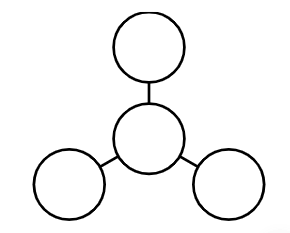Self-powering hybrid piezo-triboelectric nanogenerators for medical devices
Introduction: Self-powering hybrid piezo-triboelectric nanogenerators for medical devices
Native Assignment Help provides assignment help to assist students in the research, writing and proofreading process.
Nanogenerators can collect biomechanical energy from the movements of fingers, hands, or any body parts. Nanogenerators can power the implantable medical devices that keep track of or maintain the vitals of patients. These medical devices are portable and are powered with conventional batteries thus nanogenerators are used to power these devices. Hybrid piezo-triboelectric nanogenerators are comprised of a self-powered system that utilizes both piezoelectric and triboelectric mechanisms in order to improve the collection efficiency and to act as a power for portable as well as wearable medical devices. Recently the demand for nanogenerators is at its peak for they can generate biomechanical power from the movements of any body parts. In order to attain high flexibility for wearable devices thin polymer films are used as structural components of PTENGs in order to collect energy from a wide range of body movements.
Previous Research
Over the last few decades, IMDs, or Implantable Medical Devices have witnessed tremendous growth and have become an essential medical tool in order to improve the quality and the life span of a patient. These devices are able to diagnose various diseases that are related to the heart, brain, or other delicate body parts and are able to provide real-time support to patients. For example, pacemakers or cardiac pacemakers are able to fortify any abnormal beating of the heart with the help of electrical stimulation to clear heart blockage. In order to achieve an improved quality of life and increased survival rate for patients all over the world IMDs have equally contributed.
Despite having such advancements in the application along with the manufacturing process since 1958. The harvesters which are extremely lightweight are comfortably settled on the muscle or on the surfaces of the organ of the patient [2]. These medical devices are well-fabricated with thin films or layers of plastic which are composed of polyethylene terephthalate (PET), polydimethylsiloxane (PDMS), or polyamide (PI) as they have proper strength and are equally flexible. In the development in the field of the biomechanical energy harvesting process, various researchers disclosed their own views on harvesters based on piezoelectric energy having high performance and are known as piezoelectric nanogenerators which utilize both organic and inorganic materials. These functional devices have gained the ability to produce electricity while these devices undergo minute irregular deformation and mechanical vibration from the body parts of the patients, thus demonstrating their enormous potential for getting used in several medical devices for uplifting the life quality of patients. The rapidly expanding triboelectric energy conversion technologies, also known as triboelectric nanogenerators (TENGs), have demonstrated numerous benefits, including high efficiency, lightweight, low cost, and simple fabrications with thin films.
Less research has been done on hybrid nanogenerators, which combine the triboelectric and piezoelectric effects, as sensors than on PENGs or TENGs alone. Due to its hybrid style of operation, the hybrid nanogenerators concept primarily focuses on power management and its improvement.
Theoretical Framework and Hypotheses to be tested
Along with time, there was significant progress witnessed while utilizing triboelectricity in the sensory application. The triboelectric nanogenerators (TENG) usually have a high output voltage, unlike the other electric nanogenerators thus making them more efficient in harvesting energy while acting as a sensor. Moreover, triboelectric nanogenerators have adapted themselves for benign use as a sensor to sense frequency for triboelectric nanogenerators need a contact-separation are motion [1]. The main advantage of piezoelectricity is harvesting or collecting electrical energy from the pressure with the involvement of an external power source. Due to their small and compact size as compared to their electrical output, devices draw the attention of researchers. The gadget, which was designed as a health monitoring sensor, ought to be able to gather enough energy even in cramped areas. Because they are frequently incorporated into complex human organs, HBNGs are extremely different from TENGSs in that they just need a small separation distance to operate. Health monitoring sensors also need to have enhanced signal detection and quick and real-time reason capabilities. Instead, HBNGs can satisfy all of these requirements.

Figure 1: Recent advancements of hybrid piezo-triboelectric nanogenerators
Some progress has been made by scientists on the purpose of using these hybrid nanogenerators as sensor devices, where these HBNGs have demonstrated their potential and appeared to be more advantageous than the other PENGs or TENGs. A design has been proposed which is flexible, more sensitive, and transparent this structure can be achieved if the electrodes are made of silver nanowires and are arranged in a vein-like structure of a leaf [3]. This kind of design will allow higher frequency with respect to the conventional nanowires and will have high transmission and a low resistance will also be offered from the sheets. Due to their transparency materials like thermochromics’ liquid crystal films can be easily installed on them as the thermochromics’ liquid crystal films change their color based on the temperature and allow the HBNGS to be used as visual thermometers if they are calibrated in a proper way [9]. Hybrid generators used in wearable devices are also equipped for the detection of health because of the fiber-based design. The devices are basically comprised of three parts silver nanowire electrodes which are transparent in nature, PVDF, and PDMS. The crucial part is arranging the silver nanowires in the structure of the leaf veins.
Expected outcomes and their pedagogical implications
Hybrid generators can also be applied to the field of physical rehabilitation, performance, monitoring, and sports medicine. Hybrid nanogenerators were mounted to various body areas of the athletes for proper monitoring of each muscle and body part of athletes. If attached to the abdomen, then the device can easily monitor and present every breathing structure of the athlete. The hybrid nanogenerators could generate and read out heartbeats [4]. The hybrid nanogenerators are mounted on the wrist of the athlete in order to monitor each and every pulse structure and rate of the athlete’s heartbeat.
With the help of wearable HBNGs, the vitals of the critical areas of body parts can be easily monitored thus reducing the chances of a serious condition. In addition, numerous helpful measurements can be taken when the devices are applied to the neck rather than the joint. The device might be positioned on the neck, for instance, to monitor swallowing [5]. The gadget which is worn around the neck can be used to forecast Parkinson’s disease using information about neck tilting. Last but not the least, monitoring coughs might be helpful for a variety of respiratory problems. The HBNGs also play a vital role while monitoring cardiovascular activity. As heart disease is one of the main causes of death nowadays all over the world [6]. Innovative designs have already been imposed on implantable TENGS with HBNGs in order to enjoy more accurate and precise details of patients' vitals as well as they are equipped with 24 hours of monitoring [Referred to Appendix 1].
Methods
The involvement of nanogenerators in the medical field or healthcare has eased the process of monitoring and diagnosis of the patient. Moreover, the hybrid piezoelectric-triboelectric nanogenerators deliver a greener alternative to the other devices of monitoring because of the nature of the materials used or what they are comprised of. They are even more easily get equipped with clothes or on the surface of the skin, besides they are capable to provide accurate and constant data about the vitals of health while monitoring [7]. In order to enhance the piezoelectricity, the screening effect should be reduced, this happens when the free carriers of the nanowires of the nanogenerators partially nullify the piezo potential that is generated when compressed. A construction that is flexible, more sensitive, and transparent has been proposed. It can be realized if the electrodes are silver nanowires and are placed in a vein-like structure similar to that of a leaf. In comparison to typical nanowires, this type of design will enable higher frequency.
It will also have good transmission and low resistance because of the use of sheets. Due to their transparency, materials like thermochromics’ liquid crystal films may be easily put on them. Many researchers have used nanoparticles of Au on the outer surface of ZnO in order to eliminate the screen effect to some extent and enhance the output. Another method is the addition of an ideal amount of graphene to the solutions of PVDF/MF, this nearly doubles the open circuit output voltage of the nanogenerators. Several modifications have been imposed on TENGs so that they can be potentially used in hybrid nanogenerators [8]. Using the treatment of fluorocarbon plasma significantly enhances the performance. A TENG which is properly treated with fluorocarbon plasma has delivered good consistency as well as durability for the output voltage to remain constant for a long period of time.
Reference Lists
Journals
[1] Chen, X., Ren, Z., Han, M., Wan, J. and Zhang, H., 2020. Hybrid energy cells based on triboelectric nanogenerator: from principle to system. Nano Energy, 75, p.104980.
[2] Delgado-Alvarado, E., Martínez-Castillo, J., Zamora-Peredo, L., Gonzalez-Calderon, J.A., López-Esparza, R., Ashraf, M.W., Tayyaba, S. and Herrera-May, A.L., 2022. Triboelectric and Piezoelectric Nanogenerators for Self-Powered Healthcare Monitoring Devices: Operating Principles, Challenges, and Perspectives. Nanomaterials, 12(24), p.4403.
[3] García-Casas, X., Ghaffarinejad, A., Aparicio, F.J., Castillo-Seoane, J., López-Santos, C., Espinós, J.P., Cotrino, J., Sánchez-Valencia, J.R., Barranco, Á. and Borrás, A., 2022. Plasma engineering of microstructured piezo–Triboelectric hybrid nanogenerators for wide bandwidth vibration energy harvesting. Nano Energy, 91, p.106673.
[4] Gupta, A.K., Hsu, C.H., Lai, S.N. and Lai, C.S., 2020. ZnO-polystyrene composite as efficient energy harvest for self-powered triboelectric nanogenerator. ECS Journal of Solid State Science and Technology, 9(11), p.115019.
[5] Luo, J. and Wang, Z.L., 2019. Recent advances in triboelectric nanogenerator based self-charging power systems. Energy Storage Materials, 23, pp.617-628.
[6] Pang, Y., Cao, Y., Derakhshani, M., Fang, Y., Wang, Z.L. and Cao, C., 2021. Hybrid energy-harvesting systems based on triboelectric nanogenerators. Matter, 4(1), pp.116-143.
[7] Patnam, H., Dudem, B., Alluri, N.R., Mule, A.R., Graham, S.A., Kim, S.J. and Yu, J.S., 2020. Piezo/triboelectric hybrid nanogenerators based on Ca-doped barium zirconate titanate embedded composite polymers for wearable electronics. Composites Science and Technology, 188, p.107963.
[8] Sahu, M., Vivekananthan, V., Hajra, S., Khatua, D.K. and Kim, S.J., 2021. Porosity-modulated piezo-triboelectric hybridized nanogenerator for sensing small energy impacts. Applied Materials Today, 22, p.100900.
[9] Zhang, J., He, Y., Boyer, C., Kalantar-Zadeh, K., Peng, S., Chu, D. and Wang, C.H., 2021. Recent developments of hybrid piezo–triboelectric nanogenerators for flexible sensors and energy harvesters. Nanoscale Advances, 3(19), pp.5465-5486.



